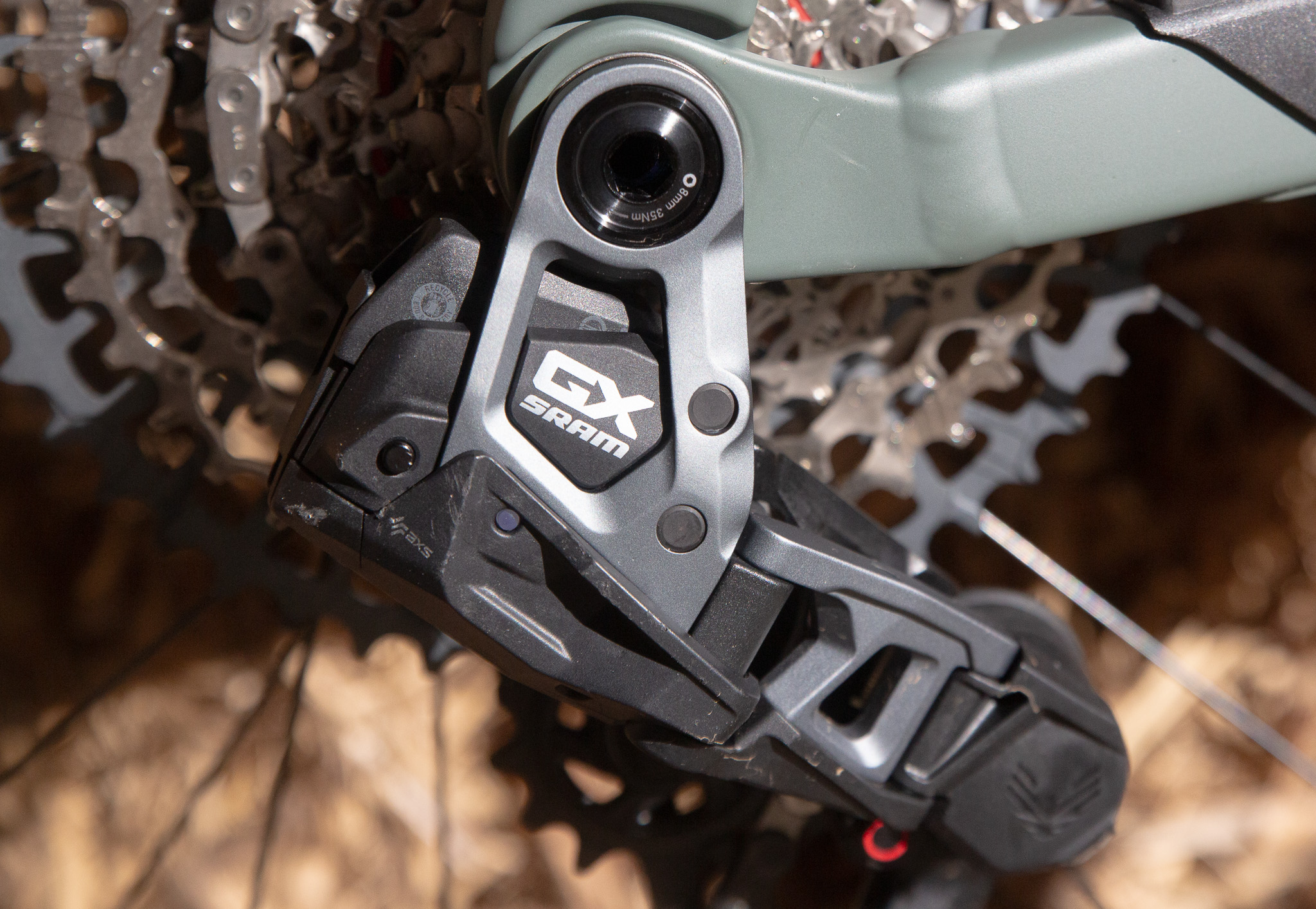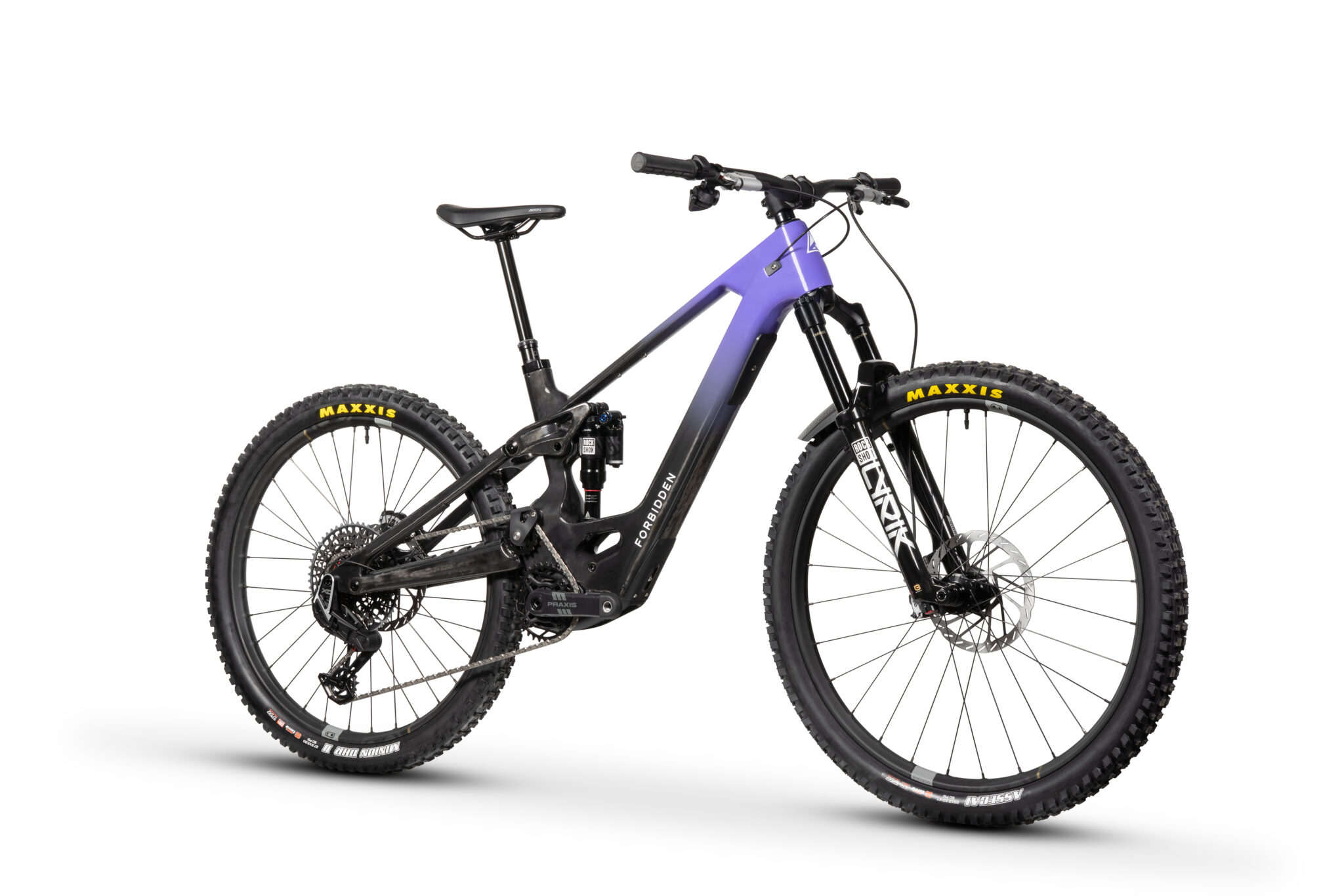TESTED: SRAM GX Transmission MTB group set
Soon after the SRAM T-type group sets were unveiled, SRAM have released the GX Transmission group set. We've had about 2 months onboard the group set - check out our review.
In March 2023 SRAM finally revealed what we had all seen around the traps for well over 6 months – the new Transmission group sets. Called T-type, the design utilised the SRAM UDH, by completely removing the derailleur hanger from the equation. By taking out variables in setup, SRAM also added a new chainline (55mm), shift mapping for precise shifting and a system that could manage the shift loads even better. The result is what some have called the best shifting, most robust group set for a mountain bike.

While the performance gains seemed to be beyond refute, the pricing was eye-wateringly high, with XX, XO and XX SL group sets released in March. But as expected, the Transmission gains were brought to GX, and a whole lot faster than AXS arrived for the lower-tier family. The SRAM GX group set has always offered the features that really matter, at a price most people can justify. And that looks to be the aim here for SRAM, and they're marketing line is that it's for those who want to ride all day. SRAM have the basics you'd expect here, with the 10-52 cassette, Transmission type rear derailleur, flat top chain and shifter pod. But they have a few crank set options – all in alloy. There are direct mount models for DUB, but also eMTB specific units for an ISIS spline, Brose and Bosch. SRAM have also highlighted that the GX T-type chain is eMTB rated. Whole group sets start at $1803.

Still GX, but better
Just like the XX, XX SL and XO Transmission group sets, the whole SRAM GX Transmission group is designed to work with the Transmission groups, the only things that are truly backwards compatible are the AXS batteries and the shifter pods.
The GX Transmission rear mech is the heart and soul of the group set, and with the direct mount it does away with the derailleur hanger, mounting exactly where the axle goes and creating a constant distance between the upper jockey wheel and the axle – something that plagues most 12-speed setups, hence the fine art of B-tension adjustment. By getting rid of this variable, plus limit screws as the mech actually sits right against the cassette, SRAM has made whole shebang a lot stiffer. And in the process, SRAM have actually made the best shifting group set out there. More on that later.

The GX mech loses the fancy spinning jockey wheel inner of XX and XX SL, and aims for a robust build with a steel inner cage. The outer link and skid plates can be replaced if damaged. SRAM still want the GX group to be known to be robust, so having that element of repair is crucial.
The GX rear cassette runs at 10-52 like the top shelf Transmission models. For a mid range cassette, it's very light at 447g (verified), and is nickel-plated for a longer life. The cassette is designed for a 55mm chainline, like all the Transmission group sets. So no, you can't just upgrade your rear mech. SRAM use their X-SYNC design, which is a lot more specific ramps to assist the shifting both up and down the cassette. It's similar to what Shimano released with Hyperglide Plus, but with their shift mapping it goes a step further.

The chain is the flat top design with solid pins, and the forged alloy cranks are said to find a balance between weight, strength, reliability and cost. The direct mount rings are available in 30, 32 and 34t, suiting the all-day riding aspirations of the group set more than the all out racing performance of the top shelf groups, where larger chain rings would likely be called up.

The shifter pod carries all the adaptability of the higher models, but like those you can still opt to swap it out for a previous generation if that suits your ergonomics. Or, you could even get one of these pods to use on your AXS Reverb. You do you.

On the trail
The SRAM GX Transmission group set shown here has been fitted to a mid-power eMTB that I've had on test for about the past 7 weeks. I was yet to really see any details about the Transmission groups and hadn't turned a pedal on one. The last group set I tested from SRAM was actually GX 11-speed way back in 2015! So it has been a while.
Having ridden on the AXS 12-speed group sets quite a lot in 2022, I knew what I liked. I really liked the ease of setup and clean lines, but I did feel that Shimano had SRAM beat for actually moving a chain across a cassette. The Hyperglide Plus shifting ramps and matching chains that Shimano brought out with their current XTR generation really made shifting far more secure, including under load. In comparison, group sets without this felt like shifts were just left to chance. That means more missed shifts, and chances of failure.
 Three things with SRAM Transmission groups change this. Firstly, setup issues are out the window with the direct mount mech. This neatly sidesteps the vagaries of B-tension setup (distance from cassette to jockey wheel) and also the need for limit screws. It's also astoundingly stiffer, which aids shift precision. The X-SYNC ramps on the cassette, plus revised ratios, work hand in hand to make the shifts more secure both up and down the cassette – and faster as well. And then there's the mapping, where the mech knows when to shift better than we do. You've seen the videos around of an AXS mech shifting faster than a Transmission one – but that says nothing of how reliable the shift is. The derailleur shifts in sync with the X-SYNC ramps to be smooth and consistent – no jumps, no skips.
Three things with SRAM Transmission groups change this. Firstly, setup issues are out the window with the direct mount mech. This neatly sidesteps the vagaries of B-tension setup (distance from cassette to jockey wheel) and also the need for limit screws. It's also astoundingly stiffer, which aids shift precision. The X-SYNC ramps on the cassette, plus revised ratios, work hand in hand to make the shifts more secure both up and down the cassette – and faster as well. And then there's the mapping, where the mech knows when to shift better than we do. You've seen the videos around of an AXS mech shifting faster than a Transmission one – but that says nothing of how reliable the shift is. The derailleur shifts in sync with the X-SYNC ramps to be smooth and consistent – no jumps, no skips.
All this adds up to a huge change on the trail. While you could mash through some gears to get to a much lower or higher gear very quickly on other systems, the act of the actual shift was always going to be determined by other things like the trail conditions. If your chain is wailing all over the place – a secure shift is chance more than design.
Throughout every ride I've had on the GX Transmission, the shifts have been silent and secure. To the point I was looking down to be sure that I had shifted. Given this has been on an eMTB with extra power going through the drivetrain, it is even more incredible. So yes, Transmission group sets do shift incredibly well, thanks to the combined impact of the stiffer platform, and the shift ramps PLUS the mech thinking more than we do.
Infact, the only thing I was stopping for on early rides was to adjust the shifting pod. Given you can move it in and outboard, around the bar, and then around it's axis, you can get it sitting just about wherever you like. As I was testing this bike and group set while also testing the Cube Stereo Hybrid HPC 140 SLX 750, I was jumping between shifting types. Of note, I didn't have slipped shifts on that Bosch-equipped eMTB either, and I like the full push of a Shimano RapidFire shifter. But the Shimano 12-speed doesn't move nearly as quietly as the Transmission group set.

In terms of the durability of the parts, I haven't done anything more than let them experience the regular scrapes. The eMTB crankset fitted doesn't have the extra bash guards, but these are options on some of the crank sets. I haven't elected to stand on the rear derailleur, but it is clear that SRAM have built it tough. I'm wary about the direct mount, but a realist as I've seen plenty of hangers tear through frames instead of sacrificing themselves.
Pricing
As you'd expect, the SRAM GX group set helps get the price down for Transmission group sets, and you'll likely be seeing the GX Transmission on newly released bikes as well. It should be available right about now from your friendly SRAM dealer.
SRAM GX Eagle T-type chain – $85
SRAM GX Eagle 55mm chainline crank set, DUB – $344 (no BB)
SRAM GX Eagle ISIS style eMTB cranks (no ring) – $241
SRAM GX Eagle T-type rear derailleur (no battery) – $688
SRAM XG-1275 T-type 10-52 cassette – $430
SRAM AXS Pod – 2 button – $258
GX Transmission group set, DUB cranks, mech, chain, cassette, pod, battery/charger – $1889
GX Transmission group set, Brose or Bosch cranks, mech, chain, cassette, pod, battery/charger – $1803
GX Transmission group set, 104 BCD ring, no crank, mech, chain, cassette, pod, battery and charger – $1631
Our take
SRAM have successfully refined the external drivetrain and derailleur system ever further with their T-type drivetrains. Better yet, the pricing of the GX group sets puts them within reach of more riders. There are benefits beyond the secure shifting that may actually save you money as well. Firstly, you'll likely have less wear on the chain and cassette as you're not mashing shifts as much. Secondly, there's less to stuff up. Even if you buy a group to fit it yourself, there are pretty comprehensive guides to fit the group, including chain length. Yes, you may need to do some micro trim for the gear shifts, but there's no limit screws to tinker or tamper with, and same for B-tension. Really, it's set and forget. With a stronger clutch, great shift ramps and a super stout platform, SRAM have what is likely the best shifting group sets in the business, and with GX they have brought the pricing to meet more mountain bikers.
What's next? Well the way the Transmission groups manage shifting load means they will work hand in hand with SRAM's own eMTB systems. But we just have to sit and wait to see what they release, and when.








